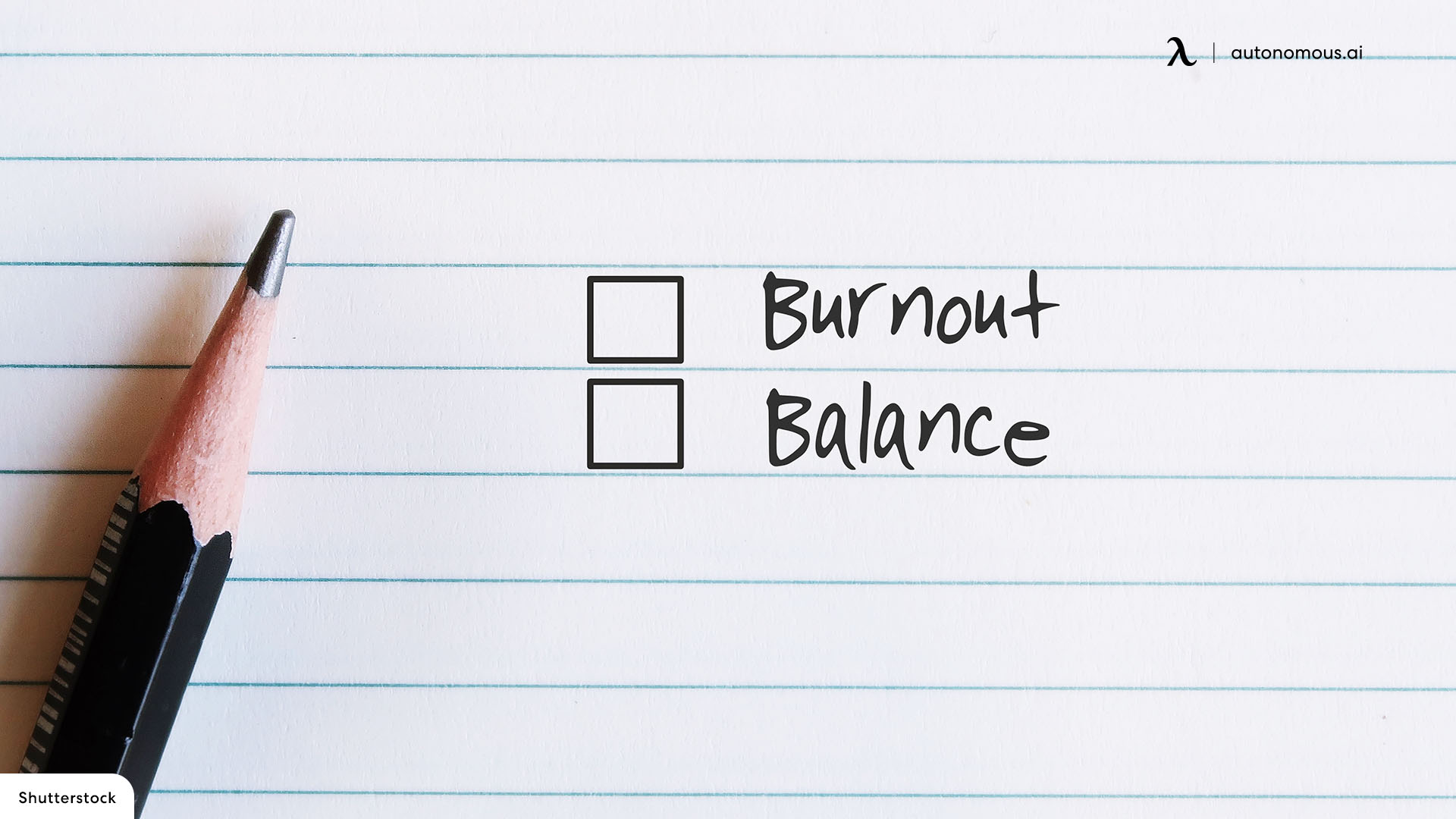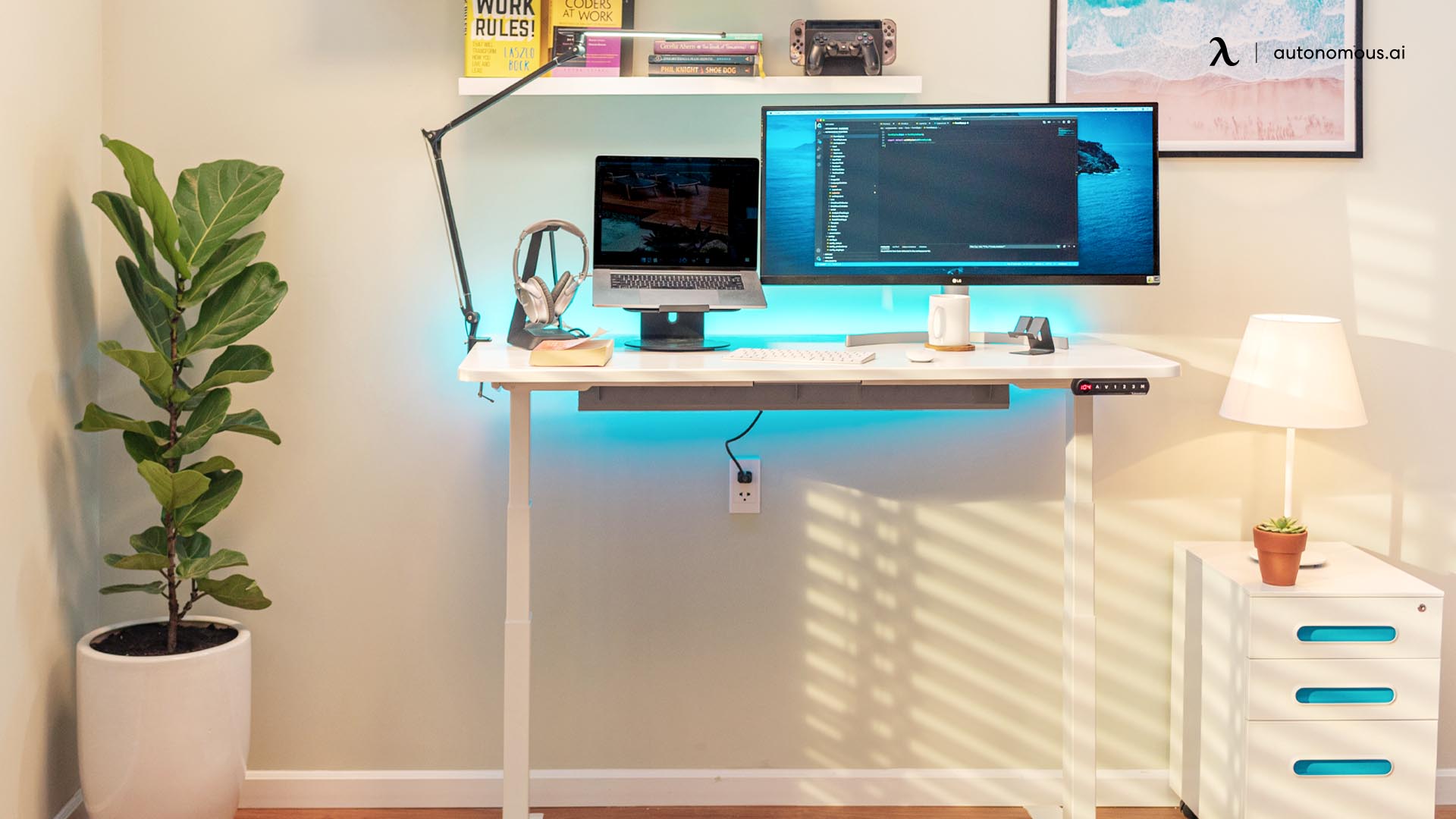/https://storage.googleapis.com/s3-autonomous-upgrade-3/static/upload/images/new_post/work-from-home-burnout-cause-solution-2996-1633520784554.jpg)
Work from Home Burnout: The Cause & How to Deal with It
Burnout (along with stress) is currently one of the biggest factors that cause unproductivity, poor work performance, and bad moods. People tend to fall into burnout due to their work environment, and that’s the area we’re going to talk about today.
Remote working has become highly popular over the past few years. While this working method may look excellent on paper, it may not be as good for people who were used to working in an office all day long.
According to recent studies, approximately 62% of employed adults in the U.S. are working part or full time at home. Moreover, 69% of employees are experiencing burnout while working from their homes, which is an alarming rate for businesses.
It’s vital to note that burnout isn’t the same as work-related stress, and it doesn’t refer to simply feeling tired from work. Burnout is known for causing many physical and mental problems in the long run, and it’s critical to tackle the issue before it’s too late.
In this article, we’re going to take a look at the fundamentals of work from home burnout, what causes it, and how to deal with it. If you’re a remote worker and are experiencing some of the symptoms stated below, make sure to read to the end of the article.
What Is Burnout?

We’re going to cover the general “Burnout” definition first since there are many misconceptions about it. Some people believe “Burnout” is a fancy word for “stress” or “exhaustion,” and others believe it’s not as severe as what some people make it to be. As mentioned before, dealing with burnout can be challenging, and if the problem isn’t addressed promptly, it could lead to serious issues in the future.
Burnout is a mental, physical, and emotional state related to extreme exhaustion. This level of exhaustion is often caused by prolonged stress over your daily work schedule. It’s common to feel stressed every once in a while when you’re at work; for example, if you weren’t able to comply with a task under the required time frame, it’s common to feel frustrated.
However, if you feel frustrated and stressed all the time, that could leave you emotionally drained, making you even less likely to comply with your daily tasks while at work. Some burnout symptoms include reduced productivity, decreased energy levels, and general frustration/sadness.
It’s vital to note that remote work burnout effects may not only affect your working life. If you’re not careful and deal with your causes of burnout on time, you may take that frustration to other areas in your life, including social life, family, and more. Additionally, prolonged effects of remote work burnout can also lead to physical illness, such as colds or fevers.
How to Know If You Have Burnout

It may be challenging for someone to know if they’re experiencing burnout right away. In some cases, they may not even notice until it’s too late. Thankfully, there are some indicators that may show you’re on your way to experiencing severe burnout while working from home.
Generally speaking, these are some of the most common indicators for work from home burnout burnout:
- You feel continually exhausted
- You dread going to work
- You stop caring about your work
- You feel every day is a bad day
- You don’t feel appreciated
Remember that burnout symptoms may vary from person to person. Additionally, you don’t go from a “calm” state to burnout overnight; burnout happens gradually, and it becomes worse as time passes. Here are some of the symptoms you may experience while going into work from home burnout burnout:
Physical Symptoms
- Tiredness
- Frequent muscle pain
- Frequent illnesses
- Altered sleeping habits
- Changes in appetite
Emotional Symptoms

- Lack of motivation
- A negative outlook on life
- Decreased satisfaction levels
- Helplessness
- Loneliness
- Sense of failure
Behavioral Signs
- Recurring to alcohol, food, or drugs to deal with stress
- Withdrawing from responsibilities
- Isolation
- Procrastinating
- Skipping work
If you pay attention to these signs, you may prevent major breakdowns while at work. Even if the symptom seems small, don’t ignore it; you could save yourself from a lot of trouble.
What Is the Difference Between Burnout and Stress?

As mentioned before, burnout and stress tend to get confused. While burnout comes from stress, they aren’t the same.
In essence, stress involves physical, mental, and emotional pressure that can lead to health problems in the future. People suffering from stress may experience overactive emotions, anxiety disorders, and more.
On the other hand, burnout is more related to feeling empty inside, as if you’re not enough. While you can feel when you’re feeling stressed right away, you may not notice you’re on remote work burnout until the symptoms are severe enough.
Why Do People Burn Out from Working at Home?

It may seem strange for someone to feel burnout if they’re working from home. Remote working is often linked to comfort, flexibility, and more positive factors. However, keep in mind that not everyone reacts the same way to different working conditions.
In the case of remote working, some people may feel isolated. Some employees enjoy being in collaborative work environments since they promote focus. However, if you’re working by yourself in your house, there may be nothing to motivate you to start working when you have to.
Additionally, remote working has also been linked to non-constant work schedules, employee exploitation, and more. As you can see, you can experience burnout in any environment as long as the conditions are met.
Here’s a list of other common causes for work from home burnout:
- Lack of control over your work
- Lack of recognition for your work
- Unrealistic job expectations
- Feeling you’re doing unchallenging work
- Working in a high-pressure environment
- Working too much
- Taking too many responsibilities at the same time
- Not getting enough sleep
How Many People Suffer from Burnout?

Aside from the statistics shown at the beginning of this page, there are many other reports regarding work from home burnout. Recent reports have shown that the COVID-19 pandemic brought several problems regarding burnout.
80% of U.S. workers believe that the pandemic impacted workplace burnout. Additionally, Millennials are the generation most affected by remote work burnout with an alarming 58% of affected workers.
How to Handle Burnout at Work
Whether you’re already experiencing some burnout symptoms or just want to be careful with it, there are many things you can do to prevent further damage to your physical and mental health.
Dealing with the main causes of burnout at home may not be easy at first, but if you pay attention to the signs, you’re less likely to experience negative effects on your life along the way.
First, you may use the “Three R” approach to identify and deal with remote work burnout at its core. This approach refers to the following:
- Recognize: Look for any burnout signals while you’re at work, even if they seem minimal
- Reverse: Seek support and tools to help with your prolonged stress
- Resilience: Take care of your emotional and physical health through resilience to stress
Here is the full list of tips you can follow to deal with burnout:
1. Look at Your Work from Another Perspective

Unfortunately, not everyone is currently working on their dream jobs. While quitting your job and looking for something you love isn’t always the most practical option, there are some things you can also do to improve the way in which you perceive your current job.
First, make sure to focus on what your job is doing for the company or the client. Once you find value in your work, you’re more likely to change the way in which you perceive your tasks and regain a sense of purpose.
In the case you don’t like your job at all, you may look for purpose and joy in other areas of your life, such as hobbies, family, or friends.
On the other hand, taking some time off whenever possible can be the perfect antidote for burnout. If you have the chance, request a few days off so that you can recharge and come back to your job with a clearer mindset.
2. Seek Help from Other People

In some cases, it’s truly challenging to tackle work from home burnout yourself. While we’re more than capable of addressing the issue ourselves, the state of mind we’re in while we’re in burnout may prevent us from seeing clearly.
Engaging in social interactions with other people can be a great relief for someone who’s stressed continually. Keep in mind it’s not the other person’s job to fix your burnout, but having a good listener around is always appreciated.
You may seek help from anyone you trust, whether it’s a significant other, family, or friends. If you have a close relationship with a coworker, you may talk to them too. Talking to people who understand your situation may help you feel better.
Make sure to avoid any type of contact with negative-minded people since that could make the burnout signs even worse.
3. Evaluate Your Priorities in Life
If you’re experiencing work from home burnout, the chances are that something is not working correctly with your current schedule. Remember that not everything in life is work, and you must also focus on other areas of your life that you may have neglected due to remote working.
First, try to set boundaries regarding your work. If you ever can’t deal with a particular task due to overextending, saying “no” is likely the best way to go. Additionally, remember to take a break from technology in general at some point during the day.
Use your free time to do something you like, pursue a new project, and do other things you may be interested in. On the other hand, if you don’t have anything to do, you may go for physical activity, such as yoga or meditation, to promote a state of restfulness.
Finally, remember to have a good night’s sleep as frequently as possible. Lack of sleep is one of the most common reasons for burnout, so make sure you’re getting enough hours every night.
4. Follow a Healthy Diet

While it may not seem like such a big deal, what you put in your body can affect your mood and energy throughout the day. If you’re not following any particular diet, make sure to minimize sugar and refined carbs, consume everything in moderation, and avoid nicotine.
5. Consider Exercising
Exercise has been proven to be an excellent way to reduce stress and burnout levels. Additionally, it can boost your mood greatly. If you exercise at least 30 minutes a day, you’re more likely to see a significant change in your mood during the day.
6. Purchase Ergonomic Furniture for Your Home Office

A common reason for work from home burnout is that people aren’t working in a comfortable space. Traditional office equipment tends to cause muscle straining, physical pain, and others, affecting your mood.
Thankfully, there is some work-from-home equipment you may be interested in. These home office essentials are perfect for turning any basic room in your home into the best space to work efficiently.
First, you need to work on a productive desk where you can place everything you need and not feel cluttered. In these cases, an electric standing desk is the best choice to take. The Autonomous SmartDesk Pro and SmartDesk Core are our top two picks for an ergonomic office desk since they offer everything you need at an excellent price.
On the other hand, you can complement your new desk with an office chair, such as the Autonomous ErgoChair Pro. Combining these two ergonomic items can already give you a much more comfortable and productive working experience, avoiding burnout for the most part.
Remember that the ergonomic experience doesn’t stop at the desk and chair. Here’s a list of other office items you may add to your setup:
- Cable tray
- Monitor arm
- Filing cabinet
- Anti-fatigue mat
- Lightbar
- Power dock
Bottom Line
As you can see, there are many ways to avoid burnout, and if you’re already experiencing some symptoms, it’s not too late to seek help and start working on the issue. If you’re looking to improve your current home office setup to reduce work from home burnout, consider looking at our employee purchase program for more options on ergonomic equipment!
Subscribe for a 10% discount on your first order.
Sign up for our weekly update and be the first to know about our specials & promotions.
Verbreiten Sie es weiter

/https://storage.googleapis.com/s3-autonomous-upgrade-3/production/ecm/240417/april-10-off-offer-2024-1920x540-CTA.jpg)
/https://storage.googleapis.com/s3-autonomous-upgrade-3/production/ecm/240417/april-10-off-offer-2024-720x1200-CTA.jpg)
/https://storage.googleapis.com/s3-autonomous-upgrade-3/production/ecm/240415/bulk-order-apr-2024-offer-720x1200-CTA-min.jpg)
/https://storage.googleapis.com/s3-autonomous-upgrade-3/production/ecm/240415/pod-offer-apr-2024-720x1200-CTA.jpg)
/https://storage.googleapis.com/s3-autonomous-upgrade-3/static/upload/images/new_post_author/admin-1.png)